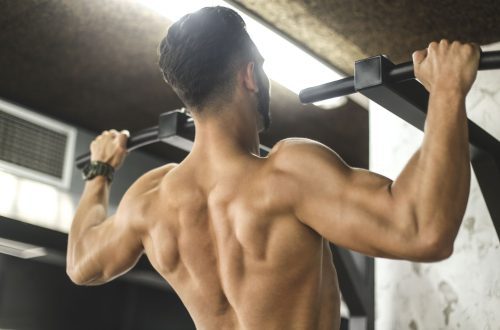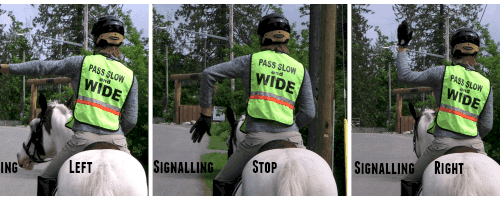
Horse breeds of horses
Contents
Arabian Thoroughbred
 The breed is one of the most ancient and noble. It was bred by the Bedouins in the 2000th-3000th centuries AD. in the central regions of the Arabian Peninsula. The most ancient of all horse breeds, the Arabian, is considered by many people to be the most beautiful on earth. A noble dry head with a concave profile, expressive eyes, a lively temperament and a step that is unique in its smoothness make it undoubtedly one of the most graceful types of living creatures. Despite the fact that the breed has been improved over many centuries, its origin is still unclear. Judging by the ancient images, this breed existed on the Arabian Peninsula as early as XNUMX-XNUMX BC. Having lived for so many centuries together with nomadic tribes, Arabian horses perfectly adapted to the harsh conditions of the desert and acquired exceptional endurance.
The breed is one of the most ancient and noble. It was bred by the Bedouins in the 2000th-3000th centuries AD. in the central regions of the Arabian Peninsula. The most ancient of all horse breeds, the Arabian, is considered by many people to be the most beautiful on earth. A noble dry head with a concave profile, expressive eyes, a lively temperament and a step that is unique in its smoothness make it undoubtedly one of the most graceful types of living creatures. Despite the fact that the breed has been improved over many centuries, its origin is still unclear. Judging by the ancient images, this breed existed on the Arabian Peninsula as early as XNUMX-XNUMX BC. Having lived for so many centuries together with nomadic tribes, Arabian horses perfectly adapted to the harsh conditions of the desert and acquired exceptional endurance.
The influence of Arabian horses on the development of horse breeding throughout the world is not comparable to any other breed. This influence began in the seventh and early eighth century AD and was associated with the spread of Islam in northern Africa and in Spain, the horses of the Arab conquerors were far superior to those of other countries, and they began to be used to improve local breeds, which continued for many centuries and in fact did not stopped until today. To this day, it is bred “purely”, without mixing with other breeds. There are several types inside the purebred Arabian breed. Average measurements:
- height at the withers – 140-156 cm
- oblique length – 150,5 cm
- chest girth – 179 cm
- wrist girth — 18 cm
Arabian horses are proportionately built but small. A small head with a broad forehead, thin lips, a characteristic concave “pike” profile, wide nostrils and small ears, a deep, well-defined cheekbone, a beautiful bend passing into the throat, a graceful “swan” neck, long, obliquely set shoulders with well-defined withers, body with a broad, voluminous chest and a short, even back, a high-set tail, strong, slender legs with well-defined tendons and dense dry bone, hard, hooves, soft, silky mane and tail
The unique profile of the Arabian horse is determined by the structure of its skeleton, which in some respects differs from horses of other breeds. Arabs have 17 ribs (other horses have 18); 5 lumbar vertebrae (other horses have 6) and 16 caudal vertebrae (other horses have 18). The movements are smooth, but quite fast. They are distinguished by good health, endurance and fertility, lively, but balanced temperament. The suit is gray, bay, red and black. They are well acclimatized and therefore widespread in many countries of the world. They were brought to Russia in the XNUMXth century. Until the middle of the XNUMXth century, Arabian horses were the main improving breed in local horse breeding, as well as in the breeding of most modern riding and draft breeds, including the thoroughbred riding, Oryol trotter. In addition to success in the dressage arena, they have proven themselves extremely well in horse races. In recent years, there has been a sharp increase in interest in racing horses of the Arabian breed. In Russia, purebred Arabian horses are bred at the Tersky and Khrenovsky studs and several small farms. 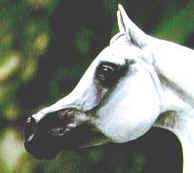 Their total number is about 5000 heads, including 30 stallions and 200 queens. The foothills of the North Caucasus became the second homeland for Arabian horses. Here, at the Tersk stud farm, thoroughbred Arabian horses of the most noble origin are grown. The glory of Arabian horses, born in the valley at the foot of the Beshtau and Zmeyka mountains, reached the most remote countries. Buyers from all over the world come to the auctions of the Tersk Stud Farm. Thoroughbred Arabian horses bred in Russia are in great demand at international auctions. The price for some reapers reaches millions of dollars. The brand of the Tersky Conngo Factory has become a kind of quality mark, which marks many champions of horse shows in European and overseas countries.
Their total number is about 5000 heads, including 30 stallions and 200 queens. The foothills of the North Caucasus became the second homeland for Arabian horses. Here, at the Tersk stud farm, thoroughbred Arabian horses of the most noble origin are grown. The glory of Arabian horses, born in the valley at the foot of the Beshtau and Zmeyka mountains, reached the most remote countries. Buyers from all over the world come to the auctions of the Tersk Stud Farm. Thoroughbred Arabian horses bred in Russia are in great demand at international auctions. The price for some reapers reaches millions of dollars. The brand of the Tersky Conngo Factory has become a kind of quality mark, which marks many champions of horse shows in European and overseas countries.
Akhal-Teke breed
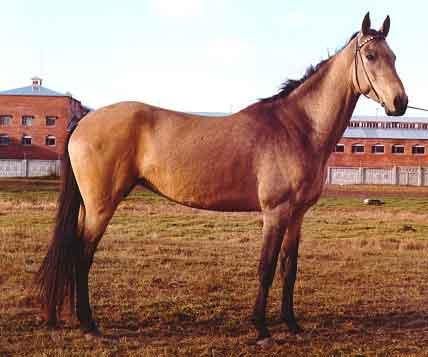 The height at the withers is 159 cm, the length of the body is 159 cm, the girth of the metacarpus is 19,3 cm. The horses of this ancient breed are outwardly very spectacular: narrow-bodied, dry build; the head is dry, noble, with large expressive eyes, very mobile nostrils; the neck is long, thin and flexible. The withers are high, the back is stretched; legs unusually dry and rather long; the coat is short, the tail and mane are not very thick. Often there are colors rare in other breeds: golden-bulan, golden-nightingale. Akhal-Teke horses have a very ardent temperament. Some horses will only let their owner in. Akhal-Teke horses are called thoroughbred horses. And this is not accidental, since for several millennia the nomadic tribes of the Turkmens kept them pure (they did not mix with other breeds of horses). The birthplace of Akhal-Teke horses is the Akhal-Teke oasis in the southern part of Turkmenistan, adjacent to the sands of the Karakum Desert.
The height at the withers is 159 cm, the length of the body is 159 cm, the girth of the metacarpus is 19,3 cm. The horses of this ancient breed are outwardly very spectacular: narrow-bodied, dry build; the head is dry, noble, with large expressive eyes, very mobile nostrils; the neck is long, thin and flexible. The withers are high, the back is stretched; legs unusually dry and rather long; the coat is short, the tail and mane are not very thick. Often there are colors rare in other breeds: golden-bulan, golden-nightingale. Akhal-Teke horses have a very ardent temperament. Some horses will only let their owner in. Akhal-Teke horses are called thoroughbred horses. And this is not accidental, since for several millennia the nomadic tribes of the Turkmens kept them pure (they did not mix with other breeds of horses). The birthplace of Akhal-Teke horses is the Akhal-Teke oasis in the southern part of Turkmenistan, adjacent to the sands of the Karakum Desert.
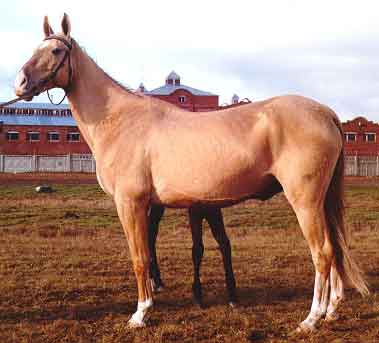 Akhal-Teke horses carry riders very smoothly, especially in the quarry. They are energetic, agile, obedient. They have not only excellent agility, especially at short distances, but also the ability to overcome various obstacles. These horses are famous for their endurance, they easily endure a hot climate, and are content with a small amount of water. Akhal-Teke horses were used to create the Don, Karabair and other breeds.
Akhal-Teke horses carry riders very smoothly, especially in the quarry. They are energetic, agile, obedient. They have not only excellent agility, especially at short distances, but also the ability to overcome various obstacles. These horses are famous for their endurance, they easily endure a hot climate, and are content with a small amount of water. Akhal-Teke horses were used to create the Don, Karabair and other breeds.
Thoroughbred riding breed
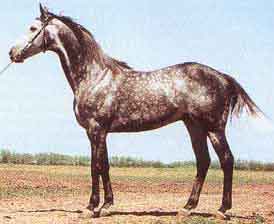 The height of the horse at the withers is 162 cm, the length of the body is 162 cm, the circumference of the metacarpus is 20,3 cm. In the 1th century, it took a leading place as an improving breed of horses, although it is itself a derivative of the Arabian breed. It differs from the compact, rounded shape of the Arabian horse by elongation and a peculiar squareness. Large in stature, with a dry physique, strong and strong legs. The head is dry, with a straight profile; the neck is long, straight; withers high, long. The skin is covered with thin and short shiny hair. The mane and tail are not very thick. A thoroughbred horse is the fastest horse in the world: it overcomes 1 kilometer in XNUMX minute.
The height of the horse at the withers is 162 cm, the length of the body is 162 cm, the circumference of the metacarpus is 20,3 cm. In the 1th century, it took a leading place as an improving breed of horses, although it is itself a derivative of the Arabian breed. It differs from the compact, rounded shape of the Arabian horse by elongation and a peculiar squareness. Large in stature, with a dry physique, strong and strong legs. The head is dry, with a straight profile; the neck is long, straight; withers high, long. The skin is covered with thin and short shiny hair. The mane and tail are not very thick. A thoroughbred horse is the fastest horse in the world: it overcomes 1 kilometer in XNUMX minute.
The Thoroughbred was developed in England (which is why it is sometimes called the English Thoroughbred) in the middle of the XNUMXth century by crossing horses of oriental breeds with the best horses in England.
Terek breed
The height of the horse at the withers is 155 cm, the length of the body is 154 cm, the circumference of the metacarpus is 19,4 cm. The Terek horse is similar to the Arabian, but larger. Suits: gray with a silvery sheen and red. Horses are distinguished by a beautiful exterior, good temperament, endurance and ease of movement. Therefore, they are often used in the higher riding school and in the circus.
Trakehner breed

In the former USSR, a large group of Trakehner horses appeared in 1945. Now they are bred at stud farms in the Rostov region, Belarus, Latvia and Lithuania. In equestrian sport, horses of the Trakehner breed are well known. Soviet athlete E.V. Petushkova on the Trakehner stallion Peple in 1970 received the title of world champion in dressage.
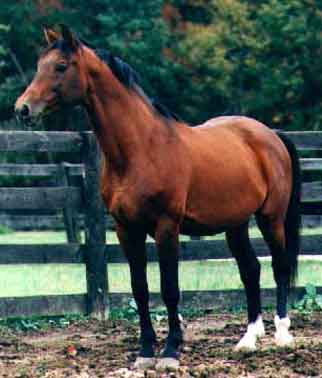
Hanover breed
 One of the most common European breeds in our time. Its breeding is closely connected with the creation in 1735 of a stallion depot in the city of Celle (at that time the Duchy of Hanover, now Germany). To improve local horses, stallions of purebred Arabian, Andalusian, Danish, and later thoroughbred riding and some other breeds were collected in this depot. It was brought to Russia after the war. Average measurements:
One of the most common European breeds in our time. Its breeding is closely connected with the creation in 1735 of a stallion depot in the city of Celle (at that time the Duchy of Hanover, now Germany). To improve local horses, stallions of purebred Arabian, Andalusian, Danish, and later thoroughbred riding and some other breeds were collected in this depot. It was brought to Russia after the war. Average measurements:
- height at the withers and oblique length – 160 – 168 cm
- chest girth – 198,8 cm
- wrist girth — 22,5 cm
Large, massive horses (their height often reaches 175 cm and above) with a characteristic medium-sized expressive head, often with a convex profile (hook-nosed), with large lively eyes, high neck extension; long graceful neck, long slanting shoulders with pronounced withers, strong deep body, muscular croup with a well-set tail, muscular legs with large well-defined joints, deep chest, wide and deep body, strong, relatively short bony limbs. Suit: any one-color suits, more often bay, red, less often black and very rarely gray. Hanovers are mobile, they have a powerful jump.
 Initially, there were two types of horses in the Hanoverian breed: ennobled and working. Currently, the Hanoverians have a purely sporting purpose. Hanoverian horses perform successfully in all types of equestrian sports – they are first-class sports horses. Hanoverians are bred in Germany (about 1800 queen mares), as well as in other countries. In Russia, they are bred at the Kaliningrad stud farm and in a number of small farms, breeding farms in Latvia and Lithuania. In total there are over 300 horses of this breed. Hanoverian horses perform successfully in all types of equestrian sports. Particularly high results were achieved by the horsemen of Germany performing on them. Modern Hanover is lighter and more refined than before and has a good temperament. Like all other breeds of German warmbloods, Hanoverian stallions are licensed only after veterinary certification, and after licensing are required to pass riding tests. Hanoverians are listed among the most outstanding sport horse breeds in the world, their usil and athleticism are especially suitable for performances in dressage and show jumping.
Initially, there were two types of horses in the Hanoverian breed: ennobled and working. Currently, the Hanoverians have a purely sporting purpose. Hanoverian horses perform successfully in all types of equestrian sports – they are first-class sports horses. Hanoverians are bred in Germany (about 1800 queen mares), as well as in other countries. In Russia, they are bred at the Kaliningrad stud farm and in a number of small farms, breeding farms in Latvia and Lithuania. In total there are over 300 horses of this breed. Hanoverian horses perform successfully in all types of equestrian sports. Particularly high results were achieved by the horsemen of Germany performing on them. Modern Hanover is lighter and more refined than before and has a good temperament. Like all other breeds of German warmbloods, Hanoverian stallions are licensed only after veterinary certification, and after licensing are required to pass riding tests. Hanoverians are listed among the most outstanding sport horse breeds in the world, their usil and athleticism are especially suitable for performances in dressage and show jumping.
Budennovskaya breed
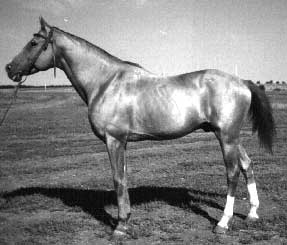 The most common of the new domestic riding breeds. Bred under the leadership of Marshal of the Soviet Union S.M. Budyonny at stud farms and collective farms of the Rostov region by crossing the Don, Black Sea and thoroughbred horse breeds. Officially recognized in 1948. Average measurements:
The most common of the new domestic riding breeds. Bred under the leadership of Marshal of the Soviet Union S.M. Budyonny at stud farms and collective farms of the Rostov region by crossing the Don, Black Sea and thoroughbred horse breeds. Officially recognized in 1948. Average measurements:
- height at the withers – 162-166 cm
- body length – 163-168 cm
- bust – 188-189 cm
Many stallions reach 170 cm. Budyonny horses have a strong constitution, well-developed muscles, strong dry legs. The color is mostly red, often with a golden hue, sometimes brown or bay, very rarely black.
They serve to improve the breeds bred in the North Caucasus, Kazakhstan and Western Siberia. Initially, Budyonnovsky horses were intended for cavalry units. Now they are widely used in equestrian sports, mainly in overcoming obstacles and triathlon. Outstanding results are achieved by Budyonnovtsy in runs. In races on the hippodrome tracks, they successfully compete with horses of other half-breed breeds. For the high sporting qualities of Budyonnovsky horses, they are willingly bought at international auctions. Horses of the Budyonnovsky breed are bred in the steppe regions by the cultural herd method
Orlovo-Rostopchinskaya breed
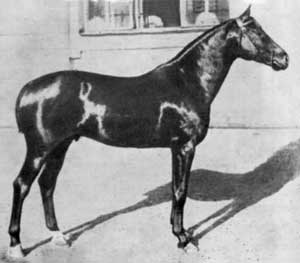 Now there are no horses of the Orlovo-Rostopchinskaya breed – one of the most beautiful breeds in the world – in their pure form. And once black, red and bay horses of high stature (height at the withers 160 cm), with long swan necks and with clear and high movements of long legs, were famous not only throughout Russia, but also abroad.
Now there are no horses of the Orlovo-Rostopchinskaya breed – one of the most beautiful breeds in the world – in their pure form. And once black, red and bay horses of high stature (height at the withers 160 cm), with long swan necks and with clear and high movements of long legs, were famous not only throughout Russia, but also abroad.
In the steppe and mountainous areas, horses are still in great need, capable of working under saddle and in harness. They must combine the qualities of riding and draft animals. In our country, a number of breeds have been bred that meet these requirements: the Don, Budennov, Kabardian, Karabair, Anglo-Kabardian, Kustanai, Novokirghiz, Kushu mekaya.
Ukrainian riding
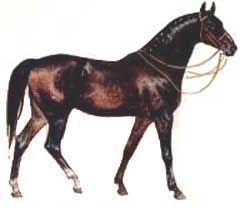 A breed of riding horses for sports purposes, bred in stud farms and farms of Ukraine by crossing mares of Hungarian breeds with stallions of the Trakehner, Hanoverian, Thoroughbred riding and Russian riding breeds. Officially approved in 1990 (until that moment it had a name – Ukrainian breed group). Average measurements:
A breed of riding horses for sports purposes, bred in stud farms and farms of Ukraine by crossing mares of Hungarian breeds with stallions of the Trakehner, Hanoverian, Thoroughbred riding and Russian riding breeds. Officially approved in 1990 (until that moment it had a name – Ukrainian breed group). Average measurements:
- height at the withers – 160 cm
- wrist girth — 20 cm
Breed of massive, large horses. Horses of the Ukrainian riding breed, especially those bearing a large proportion of the blood of a Russian riding horse, are distinguished by an elegant exterior and good movements, due to which they are successfully used in dressage. Don breed. The height of the horse at the withers is 161 cm, the length of the body is 165 cm, the circumference of the metacarpus is 21 cm. Strong animals with a massive and elongated body; medium sized head; not very long neck, low withers. The color is usually red (often golden) or brown with marks. Very hardy: they can pass more than 100 km under saddle per day.
Kabardian breed
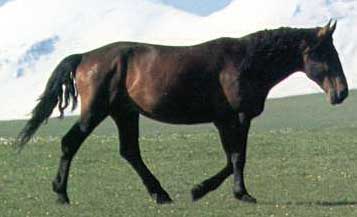 The height of the horse at the withers is 156 cm, the length of the body is 158 cm, the circumference of the metacarpus is 19,7 cm. The largest horses of the Caucasus. They are distinguished by a strong constitution, elongation of the body, dry limbs with strong hooves. The Kabardian horse has a dry hook-nosed head; muscular, low set neck; withers high and long; thick mane and tail. Suits: bay without marks, black, karakov and rarely – gray. Horses have a lively temperament, are very smart and memory-oriented, well oriented in mountainous conditions.
The height of the horse at the withers is 156 cm, the length of the body is 158 cm, the circumference of the metacarpus is 19,7 cm. The largest horses of the Caucasus. They are distinguished by a strong constitution, elongation of the body, dry limbs with strong hooves. The Kabardian horse has a dry hook-nosed head; muscular, low set neck; withers high and long; thick mane and tail. Suits: bay without marks, black, karakov and rarely – gray. Horses have a lively temperament, are very smart and memory-oriented, well oriented in mountainous conditions.
Anglo-Kabardian breed group
The height of the horse at the withers is 157 cm, the length of the body is 159 cm, the girth of the metacarpus is 12,8 cm. It was obtained by crossing horses of the Kabardian and thoroughbred riding breeds. From the Kabardian horses, the Anglo-Kabardians inherited the strength of the build and some massiveness, and from the thoroughbreds – the breed, the dryness of the build. Suits: bay, caracow and black with small marks on the head and legs. Anglo-Kabardians have proven themselves well in equestrian sports.
- Amazon 3 April 2010 city
super Reply
- Horseangel 10 2010 of August
Very interesting!!! Answer
 Lučik 1 September 2010 of
Lučik 1 September 2010 ofa little photo of the first Akhaltekin is wrong … well, apparently he got caught like that … too small Answer
- Karabash 30th of December 2010
Why is there no Karachaev breed? Answer
- dormouse ziga 23 February 2011 city
tell me, I saw in the pictures a photo of a horse in an apple but not in gray, but she was a flame in an apple suit, is this a photoshop or a suit Answer
- Black-Eye November 14 2012 city
indeed, why is there no Karachay? Answer
 Markiza_Che 14 April 2014 city
Markiza_Che 14 April 2014 cityWhere are the donuts? This is the oldest domestic riding breed! Answer




